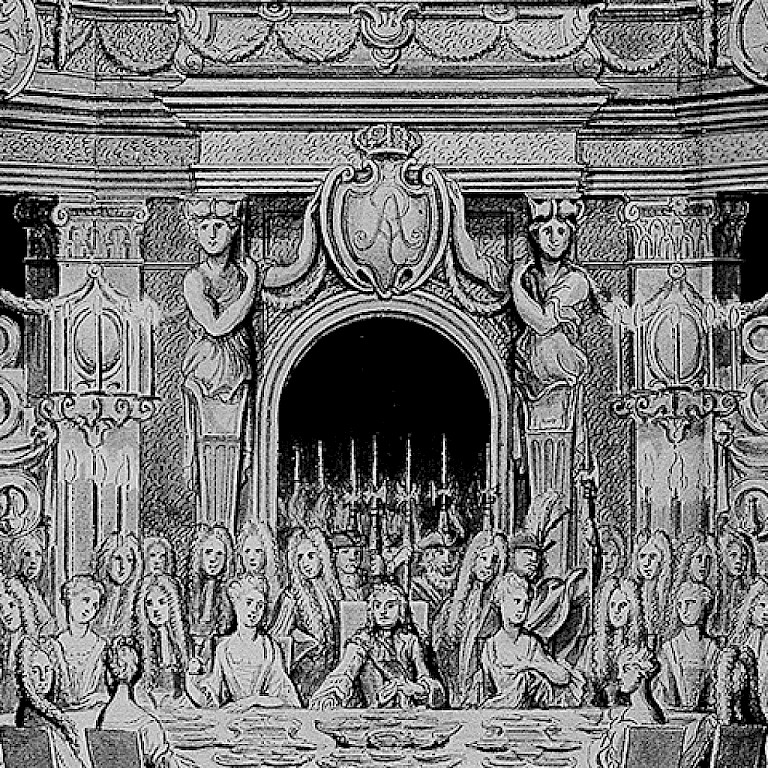
Ehrentempel zum 49.Geburtstag August des Starken im Jahr 1718
Deutsche-Fotothekdf_hauptkatalog_0021444
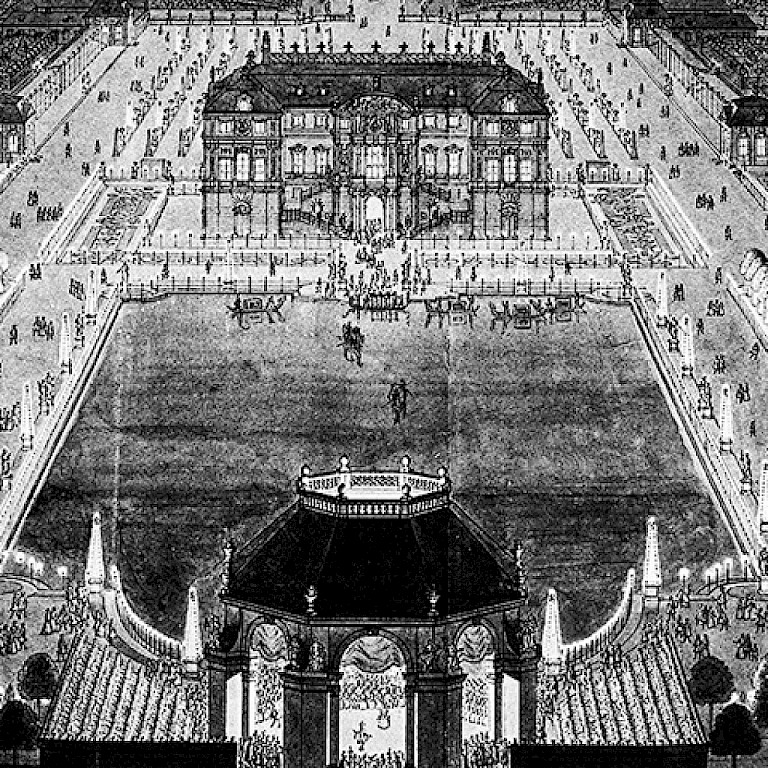
Nachtfest im Großen Garten 1719
Deutsche-Fotothek_df_hauptkatalog_0123996
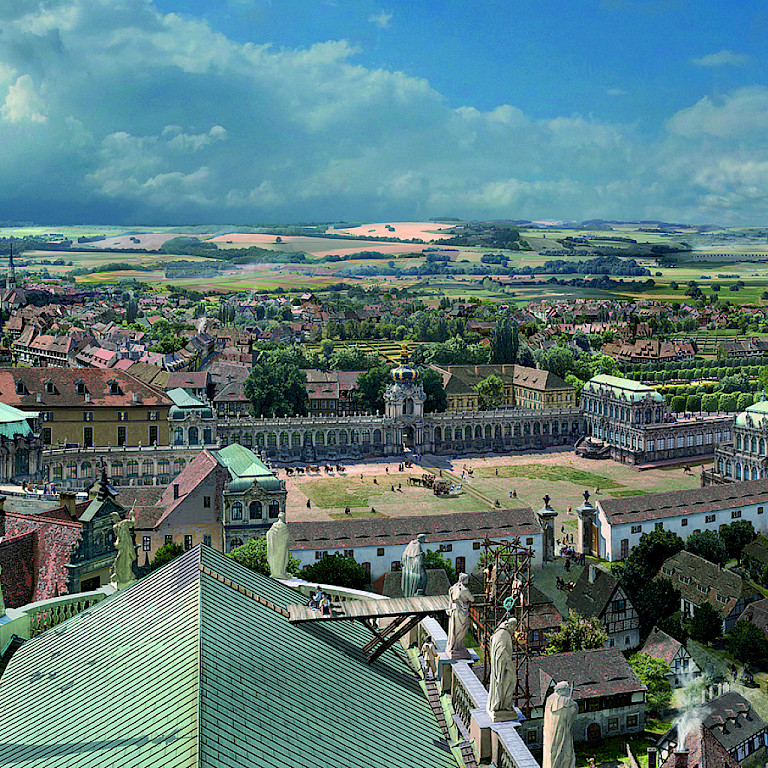
Blick auf den Zwinger
Foto: Asisi Panometer
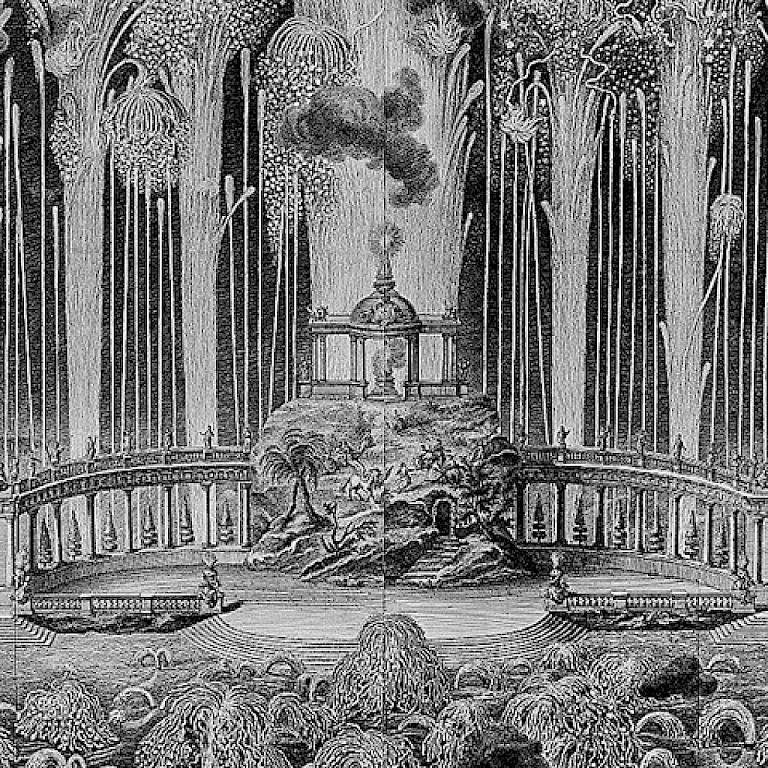
Feuerwerk im Schloss Pillnitz 1747
DeutscheFotothek_df_hauptkatalog_0097481
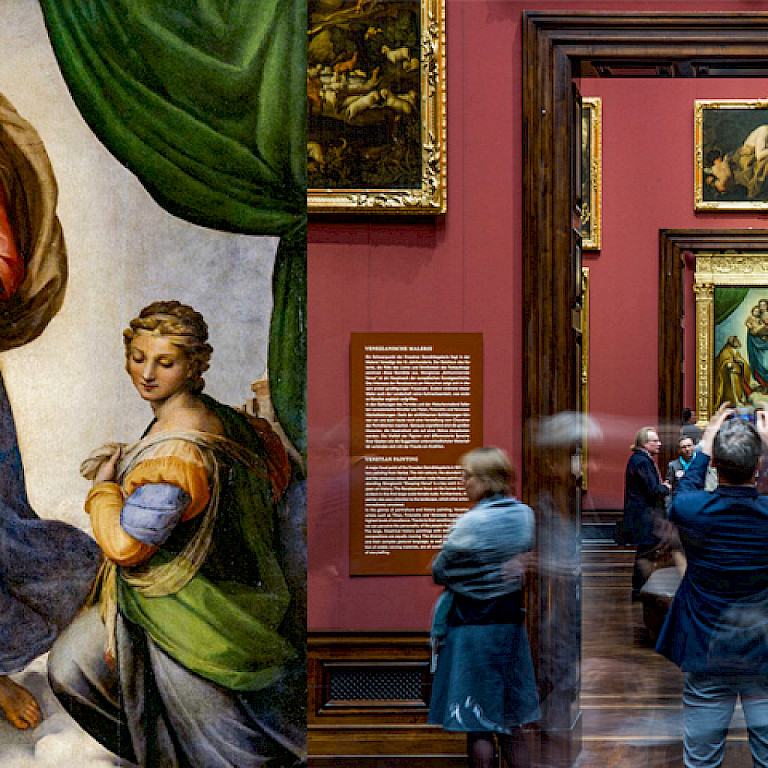
Die Sixtinische Madonna von Raffael
gemeinfrei
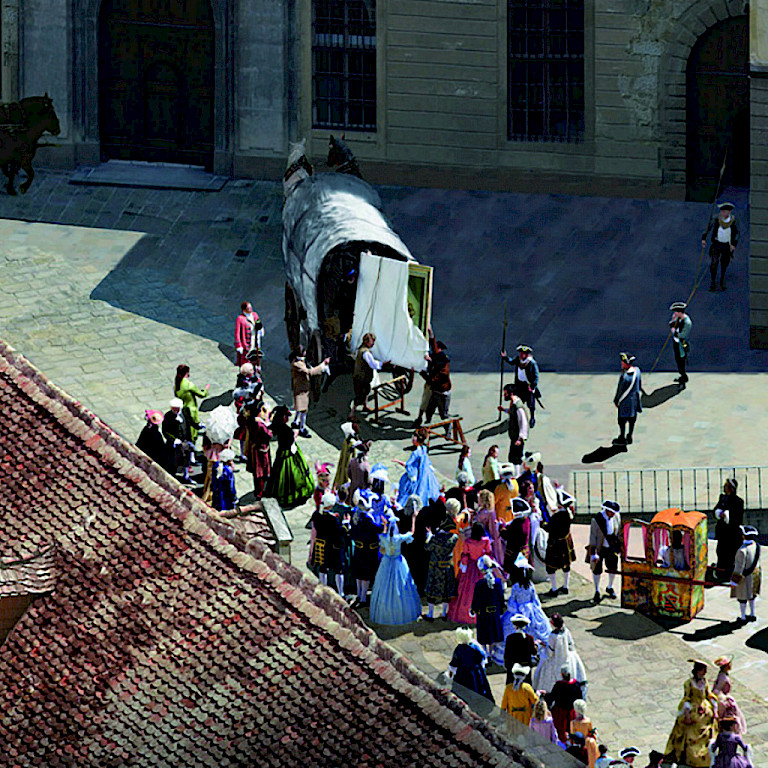
Ankunft der Sixtinischen Madonna in Dresden
Foto: Asisi Panometer

Zwinger Kronentor
Tama66/Pixabay
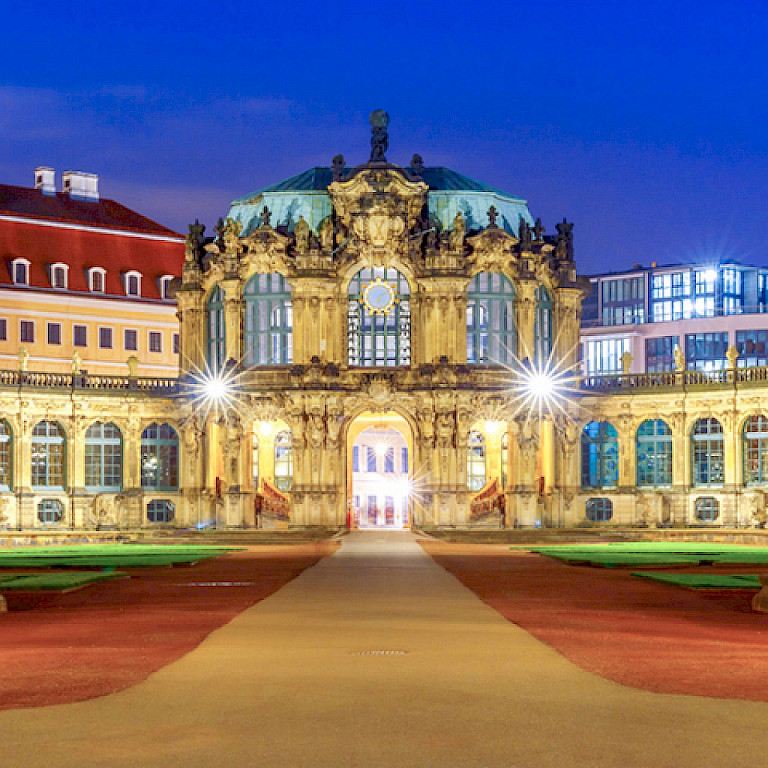
Zwinger
Kavalenkava/stock.adobe.com
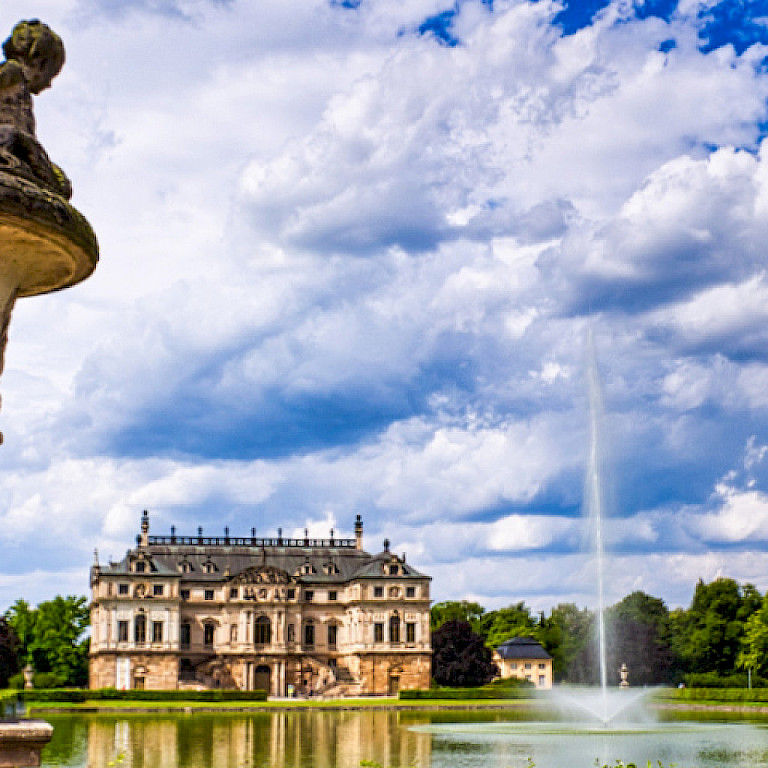
Palais im Großen Garten
Neppomuk/stock.adobe.com
07 THE COURT
Purple: The colour dominating this room is symbolic for exclusivity which we find here at the court. Because of its elaborate extraction from the juice of the purple snail, purple was the most expensive colour at that time and the only colour reserved for the highest nobility. But hardly anything expresses the baroque rulership more than the splendid courtly festivities. Under Augustus the Strong about 60 were celebrated per year, often in the Zwinger or in the Great Garden outside of the city. Even as a child, the young prince experienced elaborate festivities at the court of his grandfather John George. However, the most important role model for the ostentation of power and wealth was the French Sun King, King Louis the 14th.
Given the darkness that reigns everywhere at night, it is understandable that illuminations and fireworks were always popular on festive occasions. Thus, fireworks and a night-time thunderstorm also enliven Yadegar Asisi’s panorama. From the windows of the houses there is a weak candlelight, while the streets are without lighting. Only on the renovated Elbe bridge the oil lanterns, which Augustus the Strong had erected here according to the Parisian model, provide a little light.
During the Augustan era, Dresden rose in the European ranks as an art and culture metropolis. Augustus the Strong was particularly interested in valuable objects of art from far lands whereas his son King Augustus the Third was a passionate collector of drawings, paintings, and copper engravings. From all of the paintings that were bought, one stood out: a painting from Raffael, the world famous “Sistine Madonna”. A scene in the panorama represents the arrival of this painting in Dresden on the first of March 1754.
But not all of baroque was so glamourous. Bad hygiene conditions caused the outbreaks of pandemics. Particularly in the aristocracy, more importance was given to fashionable clothing and hair styles than personal hygiene. Make up, perfume and pomades covered the consequences of the lacking cleanliness. An original flea trap shows how people then tried to protect themselves from vermin. It was carved out of valuable ivory and was not only a useful utensil but also a modern accessory.